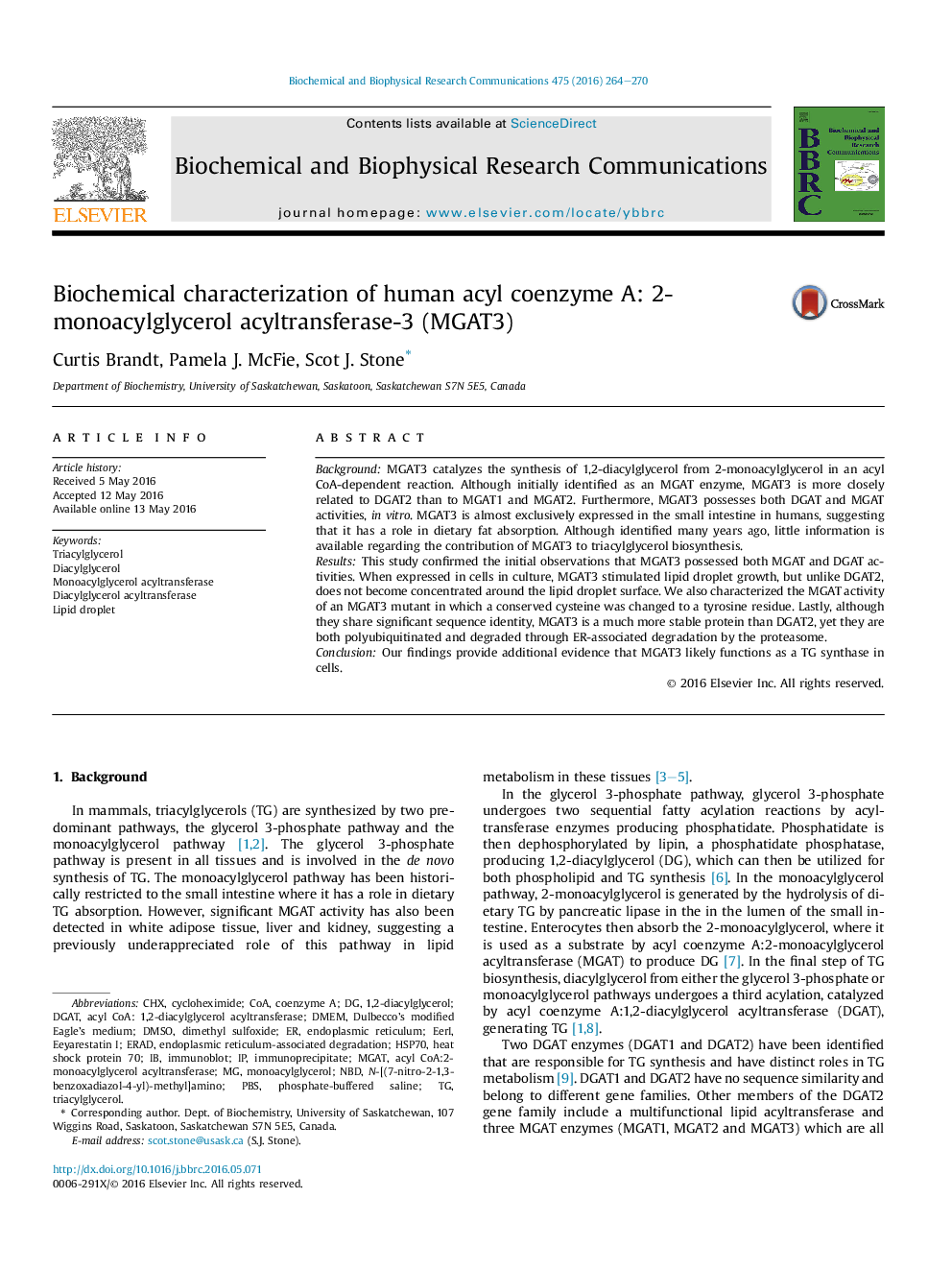| کد مقاله | کد نشریه | سال انتشار | مقاله انگلیسی | نسخه تمام متن |
|---|---|---|---|---|
| 1927805 | 1050260 | 2016 | 7 صفحه PDF | دانلود رایگان |

• MGAT3 possesses both MGAT and DGAT activities.
• MGAT3 expressed in cells stimulates lipid droplet growth.
• Unlike DGAT2, MGAT3 remains in the endoplasmic reticulum and does not interact with lipid droplets.
• MGAT3 is a more stable protein than DGAT2.
• MGAT3 is ubiquitinated and degraded via the proteasome.
BackgroundMGAT3 catalyzes the synthesis of 1,2-diacylglycerol from 2-monoacylglycerol in an acyl CoA-dependent reaction. Although initially identified as an MGAT enzyme, MGAT3 is more closely related to DGAT2 than to MGAT1 and MGAT2. Furthermore, MGAT3 possesses both DGAT and MGAT activities, in vitro. MGAT3 is almost exclusively expressed in the small intestine in humans, suggesting that it has a role in dietary fat absorption. Although identified many years ago, little information is available regarding the contribution of MGAT3 to triacylglycerol biosynthesis.ResultsThis study confirmed the initial observations that MGAT3 possessed both MGAT and DGAT activities. When expressed in cells in culture, MGAT3 stimulated lipid droplet growth, but unlike DGAT2, does not become concentrated around the lipid droplet surface. We also characterized the MGAT activity of an MGAT3 mutant in which a conserved cysteine was changed to a tyrosine residue. Lastly, although they share significant sequence identity, MGAT3 is a much more stable protein than DGAT2, yet they are both polyubiquitinated and degraded through ER-associated degradation by the proteasome.ConclusionOur findings provide additional evidence that MGAT3 likely functions as a TG synthase in cells.
Journal: Biochemical and Biophysical Research Communications - Volume 475, Issue 3, 1 July 2016, Pages 264–270